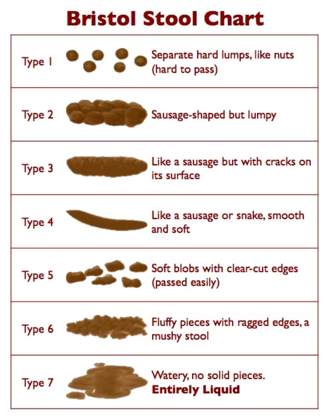IBS Symptom History
Reviewed by: HU Medical Review Board | Last reviewed: May 2023 | Last updated: July 2023
In order to diagnose irritable bowel syndrome (IBS), your doctor will assess your past medical history and your family's medical history. They will review any medicines you are currently taking (including over-the-counter drugs). They will also ask you about your symptom history.1
Your symptom history includes any and all digestive issues you may be having, how often you have symptoms, and for how long. Asking about your symptom history is an important way doctors decide whether symptoms are caused by IBS or a different condition.1
Going over your symptom history can help your doctor identify certain patterns in your symptoms. This can help them understand which type of IBS you might have. There are 3 main types of IBS:1,2
- IBS with constipation (IBS-C)
- IBS with diarrhea (IBS-D)
- IBS with mixed bowel habits (IBS-M) – a combination of constipation and diarrhea
What are IBS symptoms?
IBS symptoms can vary from person to person. But some of the most common IBS symptoms include:1,2
- Abdominal pain and discomfort, usually related to pooping (bowel movements)
- A change in bowel movements, which might include how often you poop or how your poop (stool) looks
- Diarrhea or loose stool
- Constipation or hard stool
- Bloating
- Gassiness (flatulence)
- Mucus in your stool
- Urgent need to poop or leakage (incontinence)
- A feeling of incomplete bowel movement (tenesmus)
- Nausea
Using the Bristol Stool Form Scale for IBS
The Bristol Stool Form Scale (BSFS) is another helpful tool that doctors use to help diagnose IBS. The BSFS is a chart that categorizes the consistency of stools. The BSFS describes 7 types of stool:3,4
- Type 1: Separate hard lumps, like nuts (hard to pass)
- Type 2: Sausage-shaped, but lumpy
- Type 3: Like a sausage, but with cracks on its surface
- Type 4: Like a sausage or snake, smooth and soft
- Type 5: Soft blobs with clear-cut edges (passed easily)
- Type 6: Fluffy pieces with ragged edges, a mushy stool
- Type 7: Watery, no solid pieces, entirely liquid
[Figure 1. The Bristol stool form scale]
Stool types 1 and 2 are characterized by hard stools that are difficult to pass and may require pushing and straining when pooping. These types indicate constipation.4
Stool types 3 and 4 are considered normal. Type 5 may or may not indicate diarrhea.4
Types 6 and 7 have less shape and are watery. There is more urgency to go to the bathroom with these types. They indicate diarrhea.4
The Bristol Stool Form Scale was first published in the early 1990s. Since then, it has been used by doctors and researchers all over the world. It is a convenient way for people to describe their bowel habits, and whether there has been any change in them, to their doctors.4
Symptom frequency in IBS
In addition to your symptoms and what your stool looks like, your doctor will ask about the frequency of your symptoms. This means how often and for how long you experience the symptoms.1,2,4
According to the Rome criteria, people with IBS have had stomach pain or discomfort (usually along with a bowel movement), at least once per week for the past 3 months. Other signs of IBS can include:1,4
- On days when you have at least 1 bowel movement, more than one-fourth of the stool is hard and lumpy (indicating IBS-C).
- On days when you have at least 1 bowel movement, more than one-fourth of stool is loose and watery (indicating IBS-D).
Talk with your doctor
IBS symptoms can vary from person to person. Speak with your doctor if you notice any change in your bowel movements or if you have any of the symptoms described here. While IBS symptoms do not damage your digestive tract, they can have a big impact on your overall quality of life.1